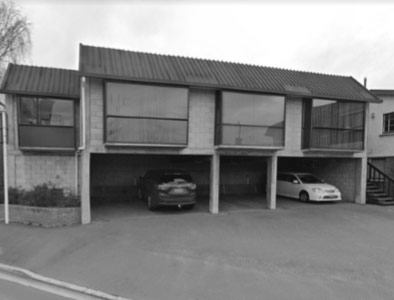Contact Us
It Is All About Kiwis Supporting Kiwis
Email us
Phone us
Timaru | P. +64 3 688-6713
Christchurch | P. +64 3 348-6713
Te Rapa, Hamilton | P. +64 7 850-1177
Dunedin | P. +64 3 477-1713
Nelson (Survey NZ) | P. +64 3 547-4069
It Is All About Kiwis Supporting Kiwis
Email us
Phone us
Timaru | P. +64 3 688-6713
Christchurch | P. +64 3 348-6713
Te Rapa, Hamilton | P. +64 7 850-1177
Dunedin | P. +64 3 477-1713
Nelson (Survey NZ) | P. +64 3 547-4069

Design Engineering has experience in Earthquake/Seismic Assessment – Initial Seismic Assessments and Detailed Seismic Assessments for various buildings throughout New Zealand. We has seismic assessment experience in steel portal frame industrial buildings and poly panel industrial buildings.
A seismic assessment carried out in accordance with Part B of the Engineering Assessment Guidelines.
An ISA uses the buildings age, building materials, seismic zone, subsoil class, building importance level, adjacent buildings and site characteristics to determine if a building is potentially earthquake prone and offer a seismic grade and range of %NBS
An ISA may not be worthwhile for older buildings or buildings with limited information on file. A DSA is recommended for such a building.
It is the seismic assessment carried out in accordance with Part C of the Engineering Assessment Guidelines. It is a comprehensive quantitative assessment of the strength and deformation capability of a building.
DSA- Is a more detailed quantitative tool which involves analysis of existing records, targeted calculations and modelling based upon the level of information available and confidence in its accuracy.
We can assist ISAs, DSAs, and general earthquake reports to provide to councils, banks insurance companies, real estate agents.
A %NBS rating indicates the percentage of the New Building Standard that a building achieves in terms of protecting life in earthquakes.
The %NBS rating provides an indication of how well the building protects life when compared with a hypothetical similar new building on that same site that just complies with the minimum standard required by the Building Code.
A %NBS rating allows comparison between buildings as well as against the earthquake-prone building requirements.
A %NBS rating doesn’t predict how the building will perform in a particular earthquake. Earthquakes have a range of different ground-shaking effects. How a certain earthquake affects a specific building at a particular site depends on many factors. These include the earthquake itself, local geological and geotechnical features, the characteristics of that specific building and how all of these factors interact.
This means a %NBS rating does not represent an absolute assessment of risk or safety. For example, a rating of less than 34%NBS does not mean a building poses an imminent risk nor is that building expected to collapse in moderate levels of earthquake shaking. However, that building is expected to present a greater risk to life during earthquake shaking than a building with a significantly higher rating.






Territorial authorities are required by the Building Act as of July 2017 to identify potentially Earthquake Prone Buildings under the time line below.
| Seismic risk area | Priority buildings | All other buildings |
| High | 2.5 years | 5 years |
| Medium | 5 years | 10 years |
Once a building is identified as earthquake prone the building owner must then undertake the necessary strengthening work to bring the building to an acceptable standard. From the issue of the earthquake prone notice the building owner has the time frames as shown below to carry out strengthening work required.
| Seismic risk area | Priority buildings | All other buildings |
| High | 7.5 years | 15 years |
| Medium | 12.5 years | 25 years |
An earthquake assessment will determine if a building is earthquake-prone (ISA and DSA) and the level of work required to strengthen the building to an acceptable standard (DSA).
If you would like to find out more about our services, or you have an opportunity for Design Engineering to assist with your engineering service requirements on any given project, and/or require a free quotation, please contact us
Adding {{itemName}} to cart
Added {{itemName}} to cart